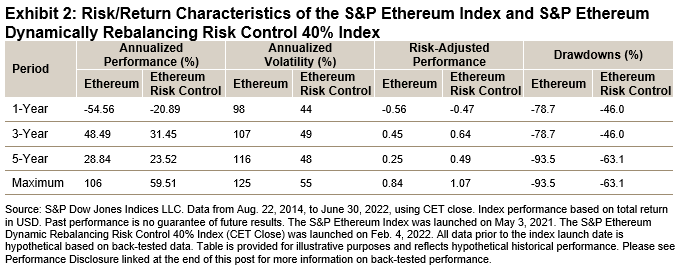The S&P GSCI remained flat in July, holding on to a 36% YTD gain despite the bearish sentiment permeating the broad financial markets. This benchmark for world commodities has proven its merit during extremely hot inflation. The Fed hiked interest rates another 75 bps to fight inflation late in the month, but several factors across commodity sectors kept prices sticky in July.
Energy was mixed, as most petroleum commodities continued to come off their highs from earlier in the year. U.S. crude oil exports hit an all-time high on the back of overseas demand due to the big discount for WTI crude oil compared to Brent crude. The S&P GSCI Petroleum fell 3.0% while holding on to a still very strong 59.5% YTD gain. Natural gas, on the other hand, spiked higher to levels not seen since 2008 due to extreme temperatures around the globe requiring extra energy to cool buildings coinciding with Russia’s continued tightening of energy supplies to the EU. The S&P GSCI Natural Gas rose an impressive 54.4% in July, taking its lead from the extreme natural gas prices seen across the Continent. Late in the month, the EU agreed on a plan to ration natural gas use over the winter, just as Russia cut natural gas flows on the major pipeline from Russia to Germany to just 20% of capacity. French power prices rose to a new record high in July after a record low nuclear power generation recently.
With the pessimistic views on the deterioration of the global economy, The S&P GSCI Industrial Metals was flat last month. The S&P GSCI Copper was down 3.9%, but there are signs stabilization may be starting to sprout. A major rating agency in Shanghai came out with a report saying that it sees a V-shaped recovery, as China’s retail sales were up 22% year-over-year in June and passenger vehicle exports grew 40% year-over-year for the second quarter of 2022.
Reports of a deal between Russia and Ukraine that would allow grain to leave the Black Sea helped ease the supply concerns rampant within the agricultural space in July. Prices were also pressured by the upcoming northern hemisphere harvest and the consensus that yields in the U.S. will be similar to last year or better. The S&P GSCI Grains ended the month down 3.4%.
The S&P GSCI Precious Metals broke lower by 2.2% to levels not seen in two years. Typically seen as an inflation hedge, gold has not lived up to the reputation after prices have moved lower while inflation has moved rapidly higher. While sovereign nations’ appetites for gold has continued to hold up, aggressive rate hikes from the U.S. Fed have suppressed gold’s appeal. The drop in industrial activity suppressed silver prices over the month.
The bright spot within commodities in July came from the Livestock sector. The S&P GSCI Lean Hogs rose 11.9% on the back of U.S. hog herd concerns and lower feed prices. Seasonal summer demand for meat continues to be strong this year.
The posts on this blog are opinions, not advice. Please read our Disclaimers.



 Exhibit 1 also illustrates a sectoral perspective on the drivers of the index scores: the S&P 500 ESG Index holds a weight of 7% in sectors with a Paris-Alignment score of > 5°C, 4% higher than the S&P 500 Fossil Fuel Index’s weight, and a little higher than the S&P 500’s. Conversely, the S&P Fossil Fuel Free Index has a 73% weight in sectors with a 1.5-2.0°C alignment and only a 3% weight in > 5°C-sectors.
Exhibit 1 also illustrates a sectoral perspective on the drivers of the index scores: the S&P 500 ESG Index holds a weight of 7% in sectors with a Paris-Alignment score of > 5°C, 4% higher than the S&P 500 Fossil Fuel Index’s weight, and a little higher than the S&P 500’s. Conversely, the S&P Fossil Fuel Free Index has a 73% weight in sectors with a 1.5-2.0°C alignment and only a 3% weight in > 5°C-sectors.






